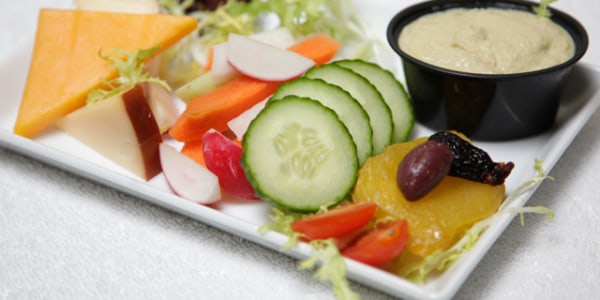On a Continental Airlines flight this summer from Newark to Seattle, a seatmate made a crack about the “mystery meat” in the complimentary in-flight meal. “Say what you want,” snapped the flight attendant, “Continental is the last airline serving free meals and soon they’re going bye-bye. I bet you’ll complain then, too.”
She was right about the complimentary meals. Starting Oct. 12, Continental, which recently merged with United, will sell buy-on-board meals on all domestic flights under six hours. Continental is the last major domestic airline to jettison free meals.
“What Continental served to coach passengers wasn’t exactly a four-course meal. It was more like a roll with a piece of meat,” said aviation expert Mike Boyd of Boyd Group International. “I won’t miss it. But now that the free meals are gone, I’m sure some people will complain.”
Moving away from free food, according to Jim Compton, Continental's chief marketing offer, is a reflection of “today's market and customer preference.” Eliminating complimentary meals will save the airline an estimated $35 million each year — not much when you consider an airline's success is measured in billions of dollars, but still significant in an era when every penny counts.
Do meals matter?
Mary Tabacchi, an associate professor of food and beverage management at the Cornell University School of Hotel Administration, doubts whether anyone will care that Continental has cut its complimentary meal service. “Economy-class passengers voted with their feet a long time ago. Schedules and cost now come first and food is way down in the rankings. Meals on Continental were just a bonus.”
For now, most airlines continue to offer complimentary coffee, tea, water and soft drinks. “Our complimentary snacks are still offered with beverage cart service on most flights — cookies in the morning and pretzels for the rest of the day/evening,” said Continental spokesperson Mary Clark.
Continental is not the only carrier still offering free snacks. Southwest Airlines passengers can snack on peanuts or pretzels on all flights. And complimentary snacks on AirTran and United include small bags of pretzels or Biscoff cookies. Delta Airlines adds peanuts into that mix.
Midwest Airlines became famous for its complimentary, warm chocolate chip cookies — a tradition that continues even after it merged with Frontier. Alaska Airlines hands outs a complimentary snack mix and, on some longer flights, Cougar Mountain cookies. Alaska passengers going to Hawaii are also treated to a small serving of Mauna Loa Macadamia nuts and a complimentary Mai Tai or passion orange guava juice.
JetBlue offers passengers unlimited servings of chips, cashews, animal crackers and other items. And each month, Horizon Air, a regional carrier in the Pacific Northwest, offers passengers a different Northwest wine and microbrew at no extra charge.
Competition on the ground
As they did with baggage fees and fees for extra legroom, aisle seats and other unbundled airline amenities, passengers are getting used to the idea of buying their own in-flight meals.
In Zagat’s 2009 airlines survey, 19 percent of travelers said they’d willingly pay for snacks on domestic flights. Only six percent said they purchased buy-on-board meals if a free meal isn't offered.
Slideshow 16 photos
Airline cuisine
So are travelers filling up on Pringles or going hungry? In many cases, neither. More than half of the respondents said they bought their in-flight meals at the airport.
“We are absolutely competing with airport food,” said Rob Gallagher, Virgin America’s catering manager. “Airports are now doing so many wonderful things with food.”
“The average passenger spends more than $8 on food per trip at the major airports,” said Hans Miller, CEO of Airside Mobile. “Airlines and airports are just beginning to see themselves in competition for those food sales as well as other service-oriented revenue.”
Passengers, in turn, are getting better snack and meal choices, said Bill Gillen, an executive chef for LSG Sky Chefs. “In the past it was just putting things together. Now there’s a lot more thought going into offering things that are interesting, innovative and a good value. Like the shaved roast turkey sandwich with corn bread stuffing some airlines will be offering during the holidays. People love that.”
Planning ahead
United Airlines is hoping passengers will love ordering, and paying for, their in-flight meals before they even get on the plane.
Last week the airline introduced two $24.99 brunch options, with chocolate and sparkling wine, for customers flying premium service flights between New York’s JFK and Los Angeles or San Francisco.
But there's a twist: Meals must be ordered online and 72 hours before a flight.
“I believe a premium meal offering would have consumer appeal,” said Henry Harteveldt, a travel analyst for Forrester Research. “But I am concerned that, even with sparkling wine, this is too expensive.”
